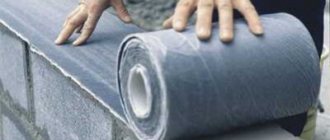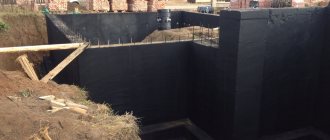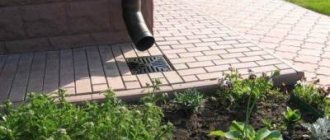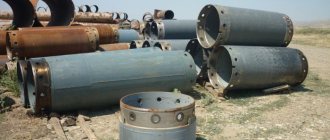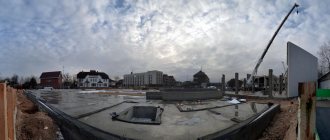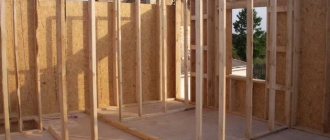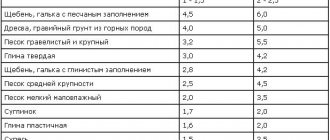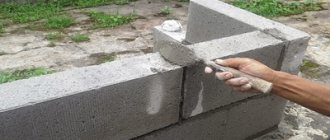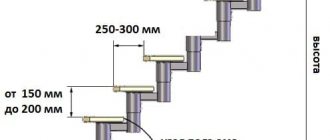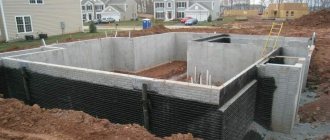When waterproofing foundations and floor structures, certain rules and regulations are adhered to, which are stipulated in the regulatory documents: SNiP, GOST and ENiR. Only by adhering to these standards can you be sure that the waterproofing work has been carried out in accordance with all the rules. Regulatory documents such as SNiP and GOST describe the main types of waterproofing, list the requirements for the materials used and the factors influencing the choice of foundation design. It also lists the methods and sequences for performing various waterproofing works. EniR is a collection that contains uniform standards and prices for construction and repair work.
Regulations
Waterproofing of foundations must be carried out in compliance with the standards described in SNiP, which lists the standards for the design and construction of foundations of buildings and various structures
Waterproofing of foundations must be carried out in compliance with the standards described in SNiP with the designation 2.02.01-83, which lists the standards for the design and construction of foundations of buildings and various structures. This document states that all underground parts of buildings, as well as buried rooms, walls, columns and foundation structures need protection from capillary, surface and ground moisture. The sequence of performing waterproofing work is regulated by SNiP with the designation 3.04.01-87.
Important: waterproofing is necessary when all other measures of protection against water (drainage, cementation, bitumenization, etc.) are economically impractical or ineffective.
As for GOST, in matters of waterproofing the foundation and floor, they are guided by document number 12.03.009-76, which describes the rules for selecting and working with various waterproofing materials.
EniR consists of forty collections that establish uniform prices and standards for the following types of work:
- installation operations;
- civil works;
- repair and construction activities.
All tariffs in EniR are calculated based on a seven-hour working day. However, operating conditions may be different, so adjustments are made. In any case, when drawing up estimate documentation for E&R, the conditions for performing the work must be specified.
Rules for waterproofing depending on the type of water
According to established rules and regulations, pasted waterproofing against wastewater and other liquids must be made from brizol, hydroglass insulation or hydroisol. The use of PVC film, polyisobutylene or fiberglass is also allowed (SNiP 3.04.01-87 section 2 and SNiP 3.04.03-85).
Against capillary rise of groundwater, the rules recommend waterproofing with black crushed stone (impregnated with bitumen) or poured asphalt concrete (SNiP 3.06.03-85 section 7).
Basic norms of SNiP
Pasted insulation is a continuous carpet of roll or film insulating materials, which is glued to the prepared base surface using mastics
According to SNiP, foundation waterproofing comes in several types:
Construction and purpose of foundation waterproofing
- Plaster insulation is a continuous moisture-resistant coating with a thickness of 6 to 50 mm. To waterproof the foundation, cold and hot mixtures based on bitumen, polymers or cement binders with filler are used. Mixtures can be applied mechanized (shotcrete) or manually. The technique is suitable for processing structures made of monolithic concrete.
- Painting waterproofing is a waterproof, continuous coating with a thickness of at least 3-6 mm. Mechanized application of paint insulation is allowed. The disadvantage is the fragility of the resulting protective layer. Depending on the raw materials used, such coatings are divided into the following types:
- bitumen compositions – pastes, emulsions, dissolved and hot bitumen mixtures;
- bitumen-polymer mixtures - nairite mastics, latex emulsions, rubber-based compositions;
- polymeric materials – paints and synthetic resins;
- polymer-cement substances are various compositions based on a mixture of latex and cement.
- Pasted insulation is a continuous carpet of roll or film insulating materials, which is glued to the prepared base surface using mastics. According to GOST, the main requirement for these materials is high moisture resistance and resistance to rotting. The use of cardboard-based materials (tar paper, glassine) for these purposes is unacceptable. Although in some cases they are suitable for waterproofing the floor.
Attention: the number of glued layers (according to GOST) depends on the level of humidity and hydrostatic pressure of the liquid.
- Installed waterproofing according to SNiP can be made from sheet steel materials and special mats. It is attached to the surface of foundation structures with anchor bolts. This technique is quite expensive and requires a lot of labor, but according to GOST, the use of such insulating materials is justified under conditions of high hydrostatic loads, significant mechanical stress, and high temperatures.
To perform waterproofing work when constructing the floor and foundation, the following materials are used:
- Various polymer, bitumen and bitumen-polymer compositions.
- Sheet and roll insulating materials.
- Special bentonite screens and other board materials.
- Asphalt.
- Cement mixtures with special moisture-resistant additives.
Important: all materials used must comply with GOST requirements.
Other materials
Cold-applied bitumen mastics are produced in liquid form based on polymers or an aqueous emulsion of bitumen. According to the requirements of SNiP, such mastics are laid in four layers. Each new layer is applied after the previous one has hardened, but no later than one day later.
SNiP also regulate the use of various rigid and semi-rigid materials as insulation, such as asbestos cement and fiberglass. This also includes polymer membranes that appeared not so long ago, which not only protect the house from moisture, but also retain heat.
Selection of insulating material and technique
The choice of brand and additives for cement, taking into account the chemical composition of the influencing waters, is made according to SNiP
Methods and materials for waterproofing the foundation and floor in accordance with SNiP are selected taking into account the following parameters:
- Soil moisture level.
- A type of hydraulic action of moisture.
- Chemical composition and aggressiveness of exposed waters.
- Presence of stray currents.
- Crack resistance of foundation or floor structures.
The choice of brand and additives for cement, taking into account the chemical composition of the acting water, is made according to SNiP marked 2.03.11-85.
Protection against stray currents is carried out in accordance with current regulations. Waters that have a negative impact on underground building structures are divided into three types:
- Filtration (capillary) is moisture that accumulates inside building structures.
- Groundwater - the presence of groundwater is determined by hydrogeological conditions and terrain. Here it is important to take into account the height of the aquifers.
- Surface water (sedimentary). This is water that seeps into the soil after precipitation and melting snow.
Important: filtration and sedimentary waters, unlike groundwater, do not exert hydrostatic pressure on building structures.
According to GOST, in the presence of hydrostatic pressure, not every type of foundation waterproofing can be used. So the selection of material depending on operating conditions is done as follows:
Types of waterproofing for strip foundations
- At a humidity level of no more than 60% and capillary suction of water, paint insulation of the foundation is suitable. In conditions of hydrostatic pressure, only a combination of adhesive and cladding insulation can be used.
- If the humidity level is in the range of 60-75 percent, then any painting materials are used for capillary suction, and for hydrostatic pressure, polymer-based compositions, cement and asphalt plaster, as well as a combination of adhesive and facing waterproofing.
- When humidity is above 75% and capillary suction, painting materials are used. Under conditions of hydrostatic pressure, only combined methods and materials based on polymers, cement and asphalt are suitable.
Important: when using cement plaster in conditions of groundwater pressure, the composition is applied by gunning on both sides of the foundation. And on the pressure side, a second paint layer is applied on top of the cement plaster.
According to SNiP, when choosing a material for waterproofing, it is necessary to take into account the crack resistance of foundation structures. They come in three categories:
- when cracks are unacceptable in any case;
- small cracks no larger than 0.2 mm are allowed;
- Two types of cracks are allowed (temporary opening - no more than 0.4 mm, long-term opening - no more than 0.3 mm).
Attention: cement plaster and paint insulation cannot be used to protect foundation surfaces of the second and third categories of crack resistance.
SNiP on foundations and foundations, which includes norms and rules
On our website, you have probably already read a lot of information about different types of foundations, earthworks and other things related to the construction of a new house.
However, we forgot about one extremely important nuance - the norms and rules of all these works
This article is a kind of guide to action that will tell you about these important nuances. The price of the book, the cover of which is shown in the photo above, is ridiculous, but the benefits are enormous.
Collection of building codes and regulations of the Russian Federation, 2009
After carefully studying the material below, you will be able to carry out construction with your own hands without errors and violations, which in the future could lead to troubles.
When working on the material, we used two basic sets of rules:
- SNiP for earthworks, bases and foundations;
- SNiP for foundations on natural foundations for columns of buildings and structures.
In addition, we drew attention to some discrepancies in the standards of our country and our neighboring Republic of Kazakhstan
Advantages and disadvantages of different methods
The coating method of applying waterproofing has the following advantages:
- high uniformity of the layer because there are no joints;
- ease of application - with a brush, roller or spatula; for large volumes spraying is possible;
- low price of the material and its application, and much more. etc.
The disadvantages are:
- a dry surface is required; there will be no adhesion on wet concrete, i.e. the mastic will quickly peel off;
- low temperature and mechanical resistance - during frost or mechanical stress, cracks may appear, so reinforcement with polyester or fiberglass mesh is required.
There are still disadvantages, but they are not so terrible.
Pasting materials
The main advantages of adhesive waterproofing include:
- cracks do not occur due to temperature changes;
- service life is significantly longer than that of coating;
- the price of materials and the complexity of application are not much higher than mastics and many others. etc.
The disadvantages include:
- laying on wet surfaces does not give the desired result;
- in the area of expansion joints it is difficult to ensure the necessary sealing;
- Simple materials have low strength, so during installation, tears are possible, which must be “sealed.”
The advantages of impregnated insulation include:
- working with wet surfaces, such as freshly laid concrete;
- the formation of cracks is impossible, on the contrary, they are eliminated when they appear - they are tightened or “healed”;
- work is carried out not on the surface of the concrete, but mainly on its thickness, etc.
But there are also disadvantages:
- they do not work well when protecting from the inside of the wall, when there is even a small hydraulic pressure outside;
- almost useless on high-density materials with a small number of pores and capillaries;
- For high efficiency on already dried concrete structures, they need to be wetted for a long time and thoroughly.
By using any waterproofing materials in full accordance with the recommendations for their use from the manufacturers, you will get the result you need and a fairly long service life.
SNiP Floor waterproofing ↑
Floor waterproofing is regulated by SNiP 2.03.13-88 “Floors”, and here the measure is not prescribed as mandatory. A waterproofing device is recommended when there is a medium or high intensity of exposure:
- water/neutral solutions (¾),
- solvents (organic),
- mineral oils and oil emulsions,
- alkalis/alkali solutions,
- acids,
- substances of animal origin.
Structures are protected from water and solutions using the following materials:
- brizol,
- hydroisol,
- isol,
- PVC film,
- polyisobutylene,
- polyethylene.
Insulating layer made of polyethylene film
The laminated bitumen waterproofing is made in 2 layers, if the intensity of exposure to water is average, polymer - in 1 layer. At high intensity, bitumen is made in 4 layers, polymer - in 2. In the presence of exposure to oils/emulsions and organic solvents, the use of adhesive bitumen waterproofing is unacceptable. It is also unacceptable to use material with tar in the composition if there is medium/high exposure to organic solvents.
In many industrial buildings there are no floor coverings - the role of the floor is performed by the screed. In such rooms, waterproofing is made continuous: the floor, walls and bottoms of trays/channels, equipment foundations, junctions of the floor and equipment foundations, joints of the floor and walls, columns, foundations, pipelines and other structures - all this is covered with a continuous layer, walls - up to the height 300 mm above floor level.
In the absence of exposure (medium/high intensity) to wastewater, a waterproofing layer is installed under the underlying layer. In the presence of exposure (medium/high intensity) to acids, a waterproofing layer is placed under the underlying concrete. If it lies below the level of the blind area, waterproofing is done even in the absence of intense exposure to wastewater.
Insulation of concrete floor on the ground
Service life and technical characteristics
Each type and type of material used to perform coating waterproofing is characterized by certain technical characteristics that determine its use and purpose, as well as service life that is guaranteed to meet the requirements for them.
Bitumen-based materials
Characteristics of bitumen mastics:
- coating layer thickness – 4.0 – 5.0 mm;
- conditional strength – 0.2-0.5 MPa (kgf/cm2);
- adhesion strength to the base (concrete) – 0.3-0.4 MPa (kgf/cm2);
- water absorption (by weight) – no more than 0.5-1% during the day;
- ability to elongate at break – 100-300%;
- conditional viscosity – at least 15-30 seconds;
- softening temperature – more than 100°C.
- service life – 4.5 – 6 years.
Cement based materials
Characteristics of cement-polymer mastics:
- coating layer thickness – 2.0 – 4.0 mm;
- conditional strength – 5.0-60.0 MPa (kgf/cm2);
- adhesion strength to the base (concrete) – 1.3-2.5 MPa (kgf/cm2);
- water absorption (by weight) – 0.1-8.0% during the day;
- brittleness temperature – minus 20*C;
- Service life – 5 – 8 years.
Polymer materials
Characteristics of polymer mastics:
- coating layer thickness – 1.0 – 2.0 mm;
- adhesion strength to the base (concrete) – 0.7-0.8 MPa (kgf/cm2);
- ability to elongate at break – 100-300%;
- operating temperature – from – 30 to + 60°С;
- application temperature – from 5.0 – 30.0 *C;
- service life – 8 – 15 years.
Classification of methods for protecting foundations from groundwater
To protect construction projects from the damaging effects of soil moisture, appropriate types of waterproofing are used, which differ in the arrangement of water-protective layers. The foundation is separated from the pressure of surrounding groundwater using water-repellent coatings that are applied to the walls. This is vertical waterproofing.
Horizontal waterproofing has a different function: it prevents the capillary spread of water up the concrete and masonry. Lay horizontal insulation on two levels. The first is created under the base of the foundation strip, the second - on the base to protect the walls of the first floor from moisture. There is a third type - floor waterproofing, which regulatory documents classify as a separate type of protection. However, due to technological similarity, installation is often combined.
SNiP2.02.01-83 considers in detail all the requirements for the construction of foundations, including:
- types of loads to which the foundations of houses are exposed;
- soil types;
- characteristics of groundwater;
- depth;
- design features depending on influencing factors, including groundwater.
General provisions
1.1. The foundations of structures should be designed based on:
a) the results of engineering-geodetic, engineering-geological and engineering-hydrometeorological surveys for construction;
b) data characterizing the purpose, design and technological features of the structure, loads acting on the foundations, and the conditions of its operation;
c) technical and economic comparison of possible design solutions (with an assessment based on the given costs) to adopt an option that ensures the most complete use of the strength and deformation characteristics of soils and the physical and mechanical properties of foundation materials or other underground structures.
When designing foundations and bases, local construction conditions should be taken into account, as well as existing experience in the design, construction and operation of structures in similar engineering-geological and hydrogeological conditions.
1.2. Engineering surveys for construction must be carried out in accordance with the requirements of SNiP, state standards and other regulatory documents on engineering surveys and soil studies for construction.
Introduced by NIIOSP named after. N.M. Gersevanov Gosstroy USSR
Approved by Decree of the USSR State Committee for Construction Affairs dated December 5, 1983 No. 311
Effective date
January 1, 1985
In areas with complex engineering-geological conditions: in the presence of soils with special properties (subsidence, swelling, etc.) or the possibility of the development of dangerous geological processes (karst, landslides, etc.), as well as in undermined areas, engineering surveys should be carried out by specialized organizations.
1.4. The results of engineering surveys must contain the data necessary to select the type of foundations and foundations, determine the depth and size of foundations, taking into account the forecast of possible changes (during construction and operation) of the engineering-geological and hydrogeological conditions of the construction site, as well as the type and volume of engineering measures for its development.
Design of foundations without appropriate engineering-geological justification or if it is insufficient is not allowed.
1.5. The design of foundations and foundations must provide for the cutting of the fertile soil layer for subsequent use for the purpose of restoration (reclamation) of disturbed or unproductive agricultural lands, landscaping of the development area, etc.
1.6. Designs of foundations and foundations for critical structures erected in difficult engineering and geological conditions should include full-scale measurements of foundation deformations.
Field measurements of foundation deformations should be provided in the case of using new or insufficiently studied structures or their foundations, as well as if the design assignment contains special requirements for measuring foundation deformations.
Pros and cons of coating waterproofing
The advantages and disadvantages of this type of waterproofing are determined by the physical properties of the materials used and the technology for their implementation.
The advantages of coating waterproofing are:
- Low cost.
- High adhesion rates (ensuring contact between the surface and the material used).
- Ease of work (application to the surface to be treated).
There are a few more disadvantages, these are:
- when applied to the surface to be coated, it requires careful preparation (cleaning from dust and dirt, sealing cracks and other damage);
- work must be carried out at positive ambient temperatures and in the absence of precipitation (for external work);
- limited service life (5 – 6 years);
- when using bitumen and bitumen-containing mastics, they need to be heated, which increases labor costs for performing such work, and the use of open fire is a potentially fire hazardous event;
- When the surface treated with coating insulation is deformed, as well as other external influences, the waterproofing layer peels off.
Video: Foundation waterproofing Technoelast Barrier BO HD
In particular, special attention should be paid to the fact that these materials can only be worked at positive air temperatures. But waterproofing in very hot weather is strictly prohibited, as well as during rain or strong wind.
When waterproofing the foundation, all structural calculations should be carried out taking into account loads and impacts, which are detailed in building codes and regulations (SNiP). Structures can only be durable and reliable if they take into account all the requirements.
Many people do not check and calculate the foundation based on SNiP. This leads to a deterioration in the further operational characteristics of the entire building built on the foundation, as well as to a decrease in the strength of the house.
Attention, TODAY only!
Similar
stroytroy.ru » Construction » Basic SNP requirements for foundation waterproofing
When constructing foundations, it is important to know the location of the groundwater level, as well as the possibility of its increase or decrease associated with the development of the territory.
When the level of groundwater or industrial waters is high, when the latter washes the foundations, their aggressiveness is determined through laboratory tests. All data on groundwater levels and their aggressiveness must be shown in geotechnical surveys of the construction site.
Foundation waterproofing is used in cases where moisture can be expected to penetrate into basements or basement rooms, as well as in the event of possible destruction of foundations by aggressive groundwater.
Waterproofing vertical surfaces of foundations can be done using one of the following traditional methods:
• by coating the insulated surfaces with cold and hot bitumen or bitumen mastics in two or three layers; • by gluing insulated surfaces with roll or sheet waterproofing materials - hydroisol, insulation, hydrostekloizol, fiberglass, etc. Waterproofing horizontal surfaces can
carried out by sticking a carpet of rolled waterproofing materials onto the concrete preparation, followed by applying asphalt, cement screed, etc. to it.
Currently, roll, sheet and liquid synthetic materials are increasingly used as waterproofing: ethylene paints, epoxy resins, perchlorovinyl enamels, polyvinyl chloride, vinyl plastic, polyethylene, etc. New materials include a waterproofing mixture based on “Hydro-S” cement. .
Cement "Hydro-S" is intended for the production of waterproof mortars, concrete and reinforced concrete structures used without additional waterproofing.
